A Peek into the World of Triathlons: Fynske Bank Multisport World Championships Triathlon Festival 2018
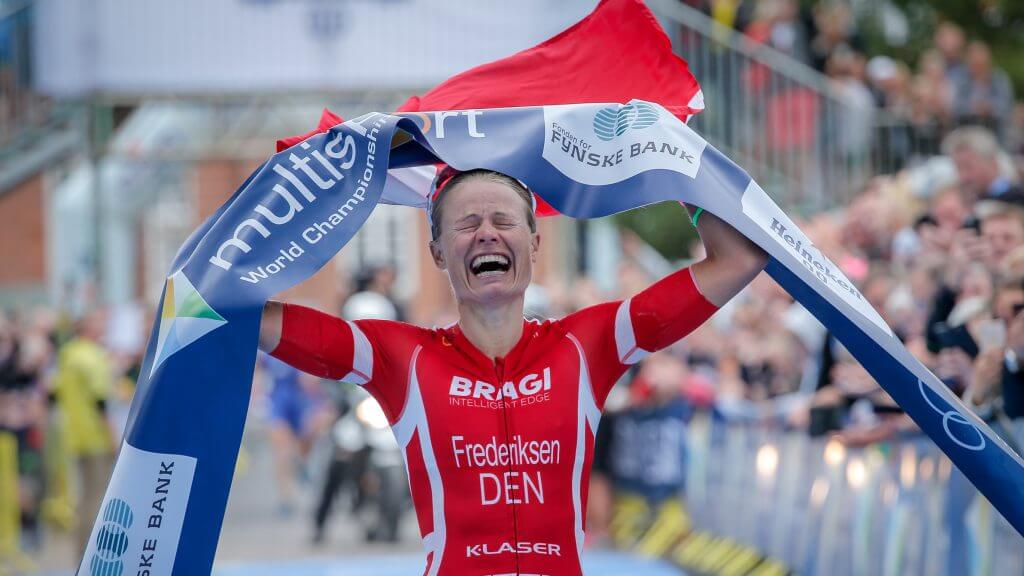
By Kelsey Mitchell, Swimming World College Intern.
The good news for retired swimmers is that there are several athletic outlets available to scratch your competitive itch, one being triathlons. Many of those who compete in the multisport events have backgrounds in competitive swimming. Triathlons, aquathlons, and aquabike races allow for former swimmers to remain in the water while also developing cycling and running skills in a competitive environment.
Joining the triathlon circuit might just land you an international trip to compete against athletes from all over the world if you place high enough in local and national races. One such race that showcased international talent was the Fynske Bank Multisport World Championships Triathlon Festival 2018 hosted from July 6 to July 14, offering a multitude of open and age group events.
To compete in the age group divisions of the festivals, athletes had to meet certain qualifying criteria determined by their country’s triathlon federation and possess a triathlon license appointed by their country’s national federation. For example, to qualify for a spot on the US team, an athlete has to rank top 18 in their age group at a prior appointed national championship race. Those who were unable to make the age group qualifying standards were welcome to participate in the open events.
Athletes from all over the world gathered in Denmark to compete, posting competitive times and showcasing some of the best racing the International Triathlon Union has to offer. Among the events were the following: aquathlon (swimming and running), cross triathlon (off-road racing), duathlon (cycling and running), aquabike (swimming and cycling), and long distance triathlon. The duathlon, aquabike, and long distance triathlon took place in Odense; the cross triathlon took place in Svendborg, and the aquathlon took place in Middelfart.
Duathlon
The festival opened with sprint and Olympic distance duathlons, taking place from from July 6 to July 8. Competitors raced through the streets of Odense, Denmark, seeing landmarks such as the King’s Garden and the Odin’s Bridge. In the sprint duathlon, age group competitors started with a 5 km run, followed by a 20 km bike ride, and ended with a shorter 2.5 km run.
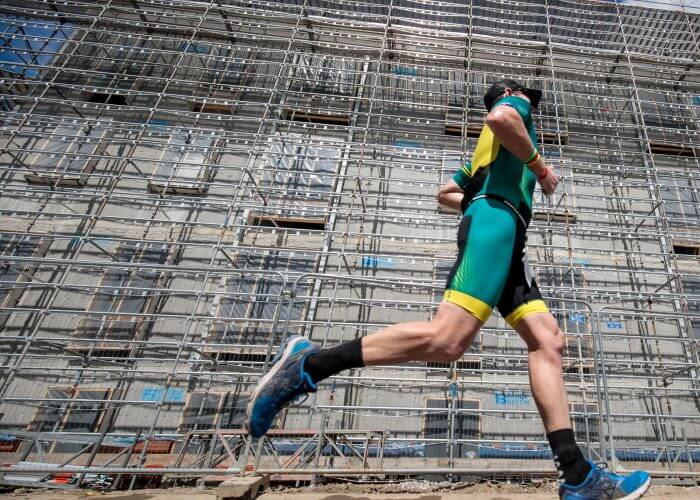
Photo Courtesy: ITU Media | Wagner Araujo
In the Olympic duathlon, both age group and elite competitors started with a 10 km run, 40 km bike ride, and 5 km run. On the men’s side, Denmark’s Andreas Schilling took first with a time of 1:35.56, followed by France’s Yohan Le Berre in a close second with a time of 1:35:57. Mark Buckingham of Great Britain took third with a time of 1:36:47. On the women’s side, Sandrina Illes of Austria took first with a time of 1:49:29, followed closely by Japan’s Ai Ueda at 1:49:38 and Georgina Schwiening of Great Britain at 1:49:47.
Cross Triathlon
Two days later on July 10, the festival moved to Svendborg, Denmark, where the cross triathlon was held. This off-road race consisted of a 1 km swim, a 27 km bike ride, and a 10 km run. Ruben Ruzafa of Spain was the first man to finish with a time of 2:06:04. New Zealand’s Sam Osborne came in second with a time of 2:07:51 and France’s Brice Daubord came in third with a 2:08:39. For the women, Great Britain’s Lesley Patterson and Nicole Walterson claimed first and second with times of 2:27:10 and 2:29:41. Eleonora Peroncini of Italy came in third at 2:29:57.
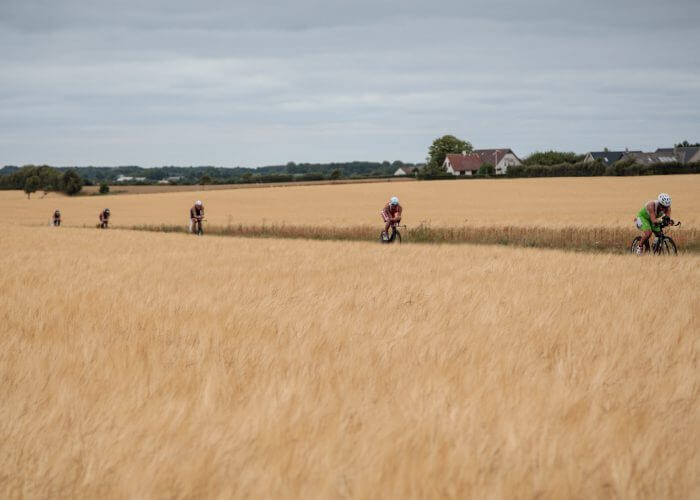
Photo Courtesy: ITU Media | Wagner Araujo
Aquathlon
The competition moved to Middelfart, Denmark on July 12, where the aquathlon took place.
The course consisted of a 1 km swim in the Middelfart Marina followed by a 5 km run in the surrounding area.
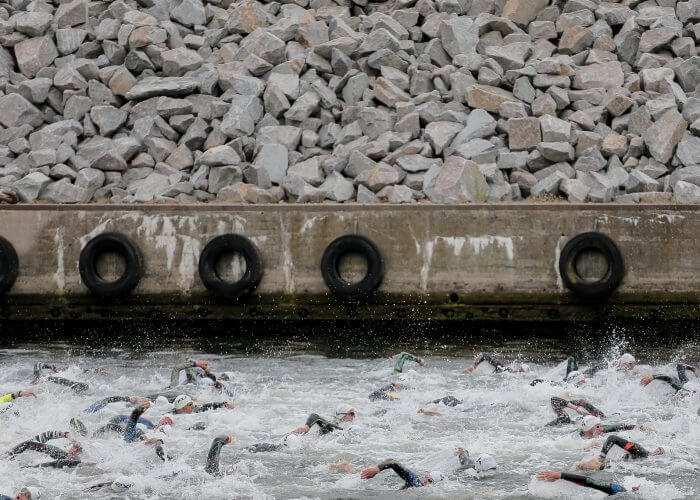
Photo Courtesy: ITU Media | Wagner Araujo
Coming in first for the men was Emmanuel Lejeune of Belgium with a 27:46, followed by Australia’s Nathan Breen at 27:57 and France’s Alexis Kardes at 28:00. For the women Edda Hannesdottir of Iceland won with a time of 31:15, followed by Hannah Kitchen of Great Britain in second with a 32:03 and Serbia’s Vida Medic in third with a 32:17.
Aquabike and Long Distance Triathlon
On July 14 – the last day of the festival – Odense, Denmark hosted both the aquabike and the long distance triathlon. The aquabike is raced on the same course that is used for the long distance triathlon. Between a half and a full Ironman, the long distance triathlon started with a 3 km swim in Odense Harbor, followed by a 121.5 km bike ride and a run of 30.7 km. The aquabike competitors completed a 3 km swim followed by a 120 km bike ride.
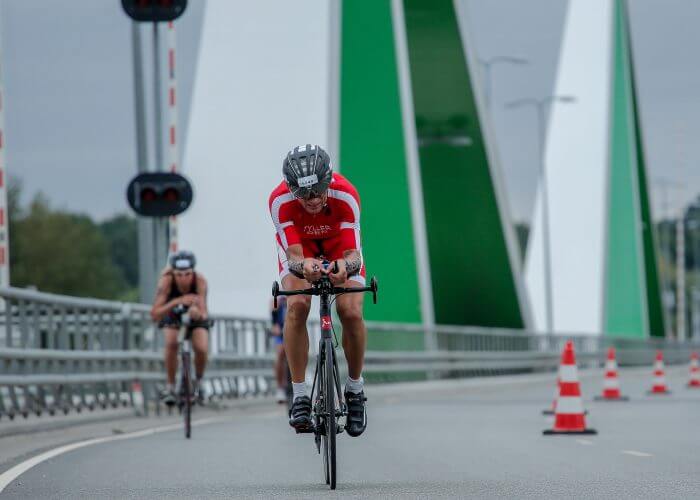
Photo Courtesy: ITU Media | Wagner Araujo
Claus Crone of Denmark won the men’s aquabike with a time of 3:36:49, followed by fellow Dane Eskild Ebbesen in second with a time of 3:42:08 and the United States’ Adam Voss in third with a 3:44:21. For the women, Amy Pritchard of Great Britain took first with a 3:58:54, New Zealand’s Mikayla Harvey came in second with a 4:01:48 and Great Britain’s Alex Clay in third with a time of 4:02:44.
Spain’s Pablo Dapena Gonzalez won the long distance triathlon for the men with a time of 5:19:30, followed by Ruedi Wild of Switzerland in second with a time of 5:22:13 and Marko Albert of Estonia took third with a 5:22:27. Helle Frederiksen of Denmark won the women’s long distance triathlon with a time of 5:49:04, Barbara Riveros of Chile came in second with a 5:51:22, and in third with a 5:55:47 was Australia’s Annabel Luxford.
The Thrill of Open Water Swimming
While open water swimming poses several different challenges than pool swimming, one of the biggest fears in open water is the marine life. Many triathlons take place on inland lakes, but the lucky few on the coast get to compete in the ocean or in salt water.
One of the long distance triathlon age group competitors, Todd Mitchell of the United States, describes the swim:
“They started [the triathlon] by age group. It was in a harbor, but not what people would think of as a harbor; like a wide canal, maybe 50 or 100 meters wide. There were lots of little jellyfish that did not sting at the beginning of the race, but as you went on there were less and less. I guess at the other race in Middelfart there were lots of jellyfish that stung.”
Once you get used to swimming in open water, the fear subsides and you’re able to relax and truly enjoy your surroundings while doing the sport you love. Open water adds an element of surprise with weather and environmental conditions, but half of the fun is in working with these challenges.
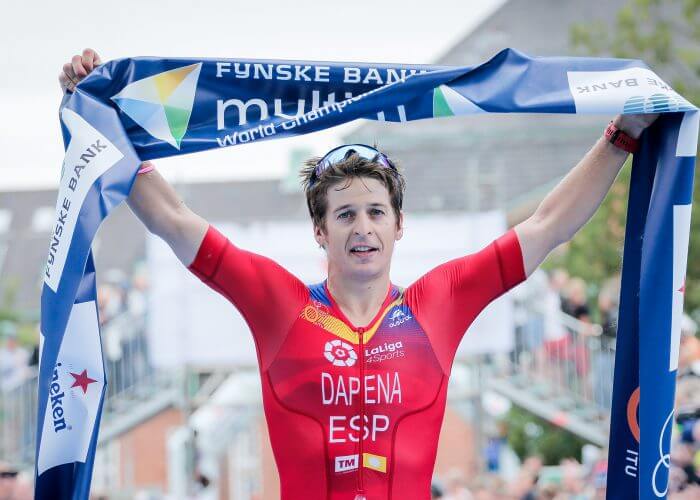
Photo Courtesy: ITU Media | Wagner Araujo
Along with the sporting events, the Fynske Bank Multisport World Championships Triathlon Festival 2018 also hosted an opening ceremony, pasta parties, parades of nations, a welcoming ceremony, and a closing ceremony, allowing for the attending athletes to celebrate and bond over their dedication and love of their sports. In triathlon, as in most sports, your competitors can become like family as you bond over the difficulties and joys of training and racing.
All commentaries are the opinion of the author and do not necessarily reflect the views of Swimming World Magazine nor its staff.



